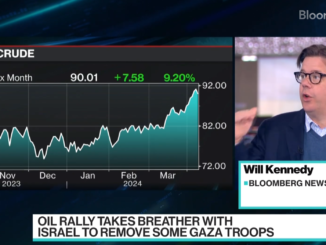
In a stark warning for the global energy landscape, a recent report from Melius Research highlights the dwindling long-term oil supply, driven by years of underinvestment in exploration and drilling.
This comes amid rising demand, with experts like Occidental Petroleum CEO Vicki Hollub emphasizing that even major finds, such as ExxonMobil’s offshore Guyana discoveries in the Stabroek Block, only cover a fraction of annual global needs.
As American shale production declines and offshore costs evolve, the industry faces a supply-constrained future unless significant new discoveries and capital inflows ramp up.
The report underscores decades of insufficient exploration activity, setting the stage for higher oil prices if the energy transition slows and demand from emerging economies persists.
With global oil demand projected to hover around 100 million barrels per day in 2025, the need for action is urgent.
Investment Required to Offset Natural Decline CurvesNatural decline rates in existing oil fields are accelerating, requiring massive investments just to maintain current production levels. Without new capital, oil output could drop by about 15% annually, according to ExxonMobil’s outlook.
The International Energy Agency (IEA) estimates that upstream investment will reach around $570 billion in 2025, with nearly 90% of recent spending since 2019 dedicated solely to replacing lost production.
However, another IEA projection suggests a 6% dip to $420 billion for upstream oil specifically, highlighting the tension between clean energy shifts and fossil fuel needs.
To merely offset decline curves—without accounting for demand growth—analysts estimate the industry needs sustained annual investments in the $500-600 billion range globally.
Absent this, advanced economies could see production plummet by up to 65% over the next decade.
This underinvestment echoes warnings from the IEA, which once called for halting new projects to meet climate goals but now grapples with faster decline realities.
Where Most New Exploration Will OccurExploration efforts are shifting toward frontier and high-potential regions to unlock new reserves.
Offshore areas remain a hotspot, with experts predicting they will dominate international drilling in 2025.
Key regions include:
Offshore Guyana and South America: Building on ExxonMobil’s Stabroek Block successes, this area continues to attract attention for its massive reserves.
Nigeria and Africa: Recent licensing rounds have unlocked significant potential, with 12 new exploration licenses issued in September 2025 alone, potentially adding substantial emissions if developed.
China’s Deep Drilling: New discoveries in previously overlooked deep formations signal untapped onshore potential.
Global Frontiers: Areas like Namibia, the Arctic, and deepwater basins in the Gulf of Mexico are seeing renewed interest, as tracked by the Global Oil and Gas Extraction Tracker, which notes over 200 sites under development worldwide.
Region-by-region forecasts from Wood Mackenzie suggest a focus on resilient plays amid policy shifts.
Approved projects in 2025, including LNG tie-ins, further emphasize offshore and frontier priorities.
Companies Investors Should Watch
For investors eyeing exploration and production (E&P), several companies stand out for their strong portfolios and growth potential in 2025. Top picks include:
|
Company
|
Key Strengths
|
Recent Focus
|
|---|---|---|
|
ExxonMobil (XOM)
|
Massive offshore discoveries in Guyana; robust balance sheet.
|
Expanding Stabroek Block production.
|
|
Chevron (CVX)
|
Diversified assets in shale and deepwater; dividend stability.
|
Acquisitions boosting Permian Basin output.
|
|
ConocoPhillips (COP)
|
Strong E&P focus; low-cost operations.
|
Alaska and international expansion.
|
|
Occidental Petroleum (OXY)
|
Shale efficiency: CEO insights on global shortages.
|
Carbon capture integration with exploration.
|
|
EOG Resources (EOG)
|
Premium drilling locations; capital discipline.
|
Permian and Eagle Ford plays.
cleverence.com
|
Other notables like Shell, BP, and Devon Energy offer value through dividends and undervalued assets.
ETFs such as the SPDR S&P Oil & Gas Exploration & Production ETF (XOP) provide broad exposure.
Impact of Current Oil Prices on Project Choices
With WTI crude hovering around $60 per barrel and Brent at approximately $67-68 per barrel as of October 30, 2025, oil companies are indeed pivoting toward lower capital expenditure (CapEx) projects to preserve cash flow amid volatility.
Falling prices—down over 13% year-to-date—coupled with rising costs and uncertainty, are prompting a slowdown in U.S. production and a focus on capital discipline.
Instead of high-CapEx mega-projects, firms are prioritizing quick-return options like infill drilling, tie-back developments, and efficiency improvements in existing fields.
This shift aligns with broader trends, where overall energy investment hits a record $3.3 trillion in 2025, but oil-specific CapEx declines by 6% as clean tech gains ground.
Deloitte’s 2026 outlook reinforces this, noting companies navigating costs and policies by focusing on resilient, low-breakeven assets like LNG and shale optimizations.
As geopolitical tensions, such as Ukraine’s strikes on Russian infrastructure, add supply risks, the industry must balance short-term caution with long-term discovery needs to avoid shortages.
Investors and policymakers alike should monitor these dynamics closely. Stay tuned to Energy News Beat for insights on what Investors are looking at for market returns.
Got Questions on investing in oil and gas?
ENB Top News
ENB
Energy Dashboard
ENB Podcast
ENB Substack






Be the first to comment